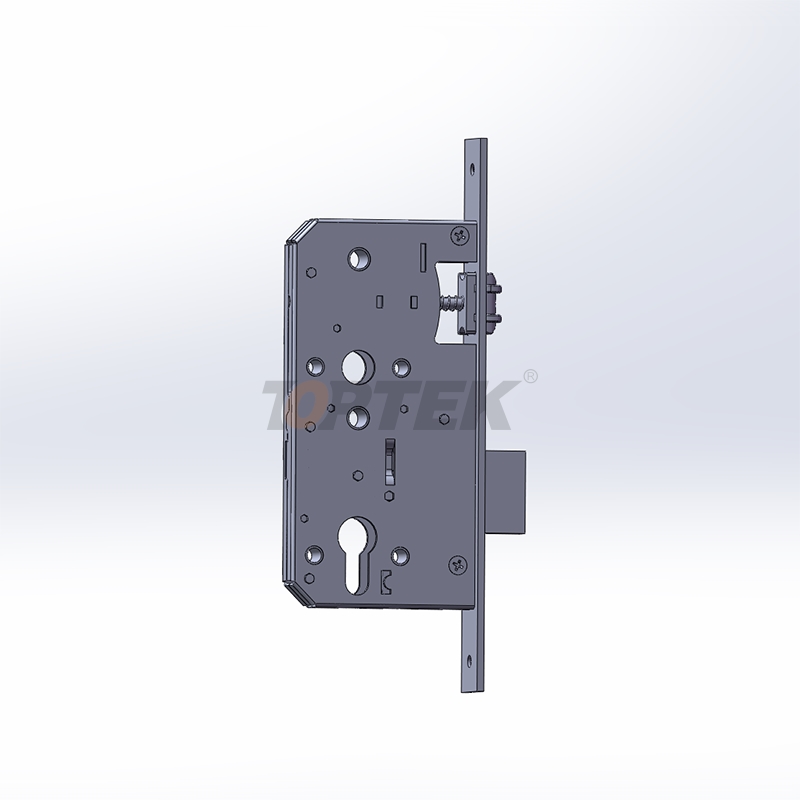School security has never been more critical. When you walk through any modern educational facility, you'll notice sophisticated locking mechanisms that go far beyond the simple key-and-lock systems of decades past. These advanced classroom mortise locks represent the frontline of educational security, designed to protect students and staff while maintaining the accessibility needed for daily learning activities.
Understanding how these classroom locks function isn't just important for administrators and facility managers—it's essential knowledge for anyone involved in educational environments. Whether you're a teacher wanting to know how to secure your classroom quickly, a parent curious about your child's safety measures, or a security professional evaluating options, this guide will walk you through everything you need to know about modern classroom locking systems.
From basic mechanical functions to advanced electronic features, classroom locks have evolved into sophisticated security tools that balance protection with practicality. Let's explore how these critical safety components work and why they're designed the way they are.
Understanding Classroom Mortise Locks
The heart of most classroom security systems lies in the classroom mortise lock. Unlike standard residential locks, these specialized mechanisms are engineered specifically for educational environments, where security needs differ significantly from homes or offices.
What Makes Mortise Locks Different
A mortise lock gets its name from the mortise—a rectangular cavity cut into the door where the lock body sits. This design provides several advantages over surface-mounted locks. The lock mechanism is embedded within the door itself, making it much more secure and tamper-resistant than locks that simply attach to the door's surface.
Classroom mortise locks typically feature a robust construction that can withstand heavy daily use. Schools see hundreds of door operations per day, from students entering and exiting to emergency situations requiring rapid access or lockdown. The mortise design distributes stress across a larger area of the door, reducing wear and extending the lock's lifespan.
Key Components of a Classroom Lock System
Every classroom lock consists of several critical components working in harmony:
The lock body houses the main locking mechanism and sits within the door's mortise. This component contains the latch bolt, which extends and retracts to secure the door, and often includes a deadbolt for additional security.
The trim pieces—handles, knobs, or levers—provide the interface for users. In classroom applications, these are typically designed for easy operation by people of all ages and abilities, meeting ADA compliance requirements.
The strike plate, mounted on the door frame, receives the latch bolt when the door closes. High-quality classroom locks feature reinforced strike plates that can withstand significant force.
The Mechanics: How Classroom Locks Operate
Understanding the mechanical operation of classroom locks helps explain why they're so effective in educational settings.
Standard Operation Mode
During normal school hours, most classroom mortise locks operate in what's called "passage mode." The latch bolt retracts when either the inside or outside handle is turned, allowing free movement in and out of the classroom. This facilitates the natural flow of educational activities—students moving between classes, teachers stepping into hallways, and administrators conducting routine visits.
The beauty of this system lies in its simplicity. Teachers don't need to fumble with keys during class transitions, and students can exit quickly in case of emergency. Yet the lock remains ready to engage security features at a moment's notice.
Privacy and Security Functions
When security becomes necessary, classroom locks can quickly transition to privacy mode. This typically happens when a teacher turns the inside handle or thumbturn, causing the outside handle to become inoperative while the inside handle remains functional. This configuration allows people inside the room to exit freely while preventing unauthorized entry from the hallway.
For higher security situations, many classroom mortise locks include a deadbolt function. When engaged, this provides a secondary locking point that significantly increases the door's resistance to forced entry. The deadbolt extends deeper into the door frame than the latch bolt and cannot be bypassed by manipulating the handle.
Emergency Override Capabilities
One of the most critical features of modern classroom locks is the emergency override function. This allows authorized personnel—typically administrators, security staff, or emergency responders—to gain access even when the classroom is in lockdown mode.
Override mechanisms vary by manufacturer and model. Some use specialized keys that work regardless of the lock's current state. Others incorporate electronic components that respond to key cards, codes, or even smartphone applications. The goal is always the same: provide rapid access for authorized personnel while maintaining security against unauthorized entry.


Electronic Integration and Smart Features
Modern classroom locks increasingly incorporate electronic components that enhance both security and functionality.
Access Control Integration
Many contemporary classroom mortise locks integrate with building-wide access control systems. These systems can manage who has access to which rooms and when. A teacher might have access to their own classroom 24/7, while substitute teachers receive temporary access codes valid only during their assigned periods.
Electronic integration also enables remote monitoring and control. School administrators can see which doors are locked or unlocked throughout the building, receive alerts about doors left open after hours, and even remotely secure or unlock specific classrooms during emergency situations.
Lockdown Technology
Advanced classroom locks can participate in automated lockdown systems. When a security threat is detected, these systems can simultaneously engage locks throughout the building, securing classrooms without requiring individual teacher action. This capability can save crucial seconds during emergency situations.
Some systems go further, integrating with fire alarm systems to automatically unlock doors during fire emergencies, ensuring clear evacuation routes while maintaining security during other types of threats.
Installation and Maintenance Considerations
Proper installation of classroom mortise locks requires expertise and attention to detail. The mortise must be cut precisely to house the lock body securely, and all components must align perfectly for smooth operation.
Regular maintenance ensures these critical security components continue functioning reliably. This includes lubricating moving parts, checking door alignment, and testing all security functions. Many schools establish maintenance schedules that include monthly testing of emergency features and annual comprehensive inspections by qualified technicians.
Choosing the Right Classroom Lock System
Selecting appropriate classroom locks involves balancing multiple factors: security requirements, budget constraints, existing infrastructure, and user needs. Schools must consider their specific threat assessment, the age of their student population, and local building codes.
The best classroom mortise locks offer reliability, ease of use, and robust security features. They should meet or exceed industry standards for durability and security while remaining accessible to users of all abilities.
Protecting Educational Environments
Classroom locks represent far more than simple door hardware. They're sophisticated security tools designed to protect our most precious assets—students and educators—while facilitating the open, collaborative environment essential for learning.
Understanding how these systems work empowers everyone in the educational community to use them effectively. Whether you're a teacher securing your classroom, an administrator evaluating security upgrades, or a parent wanting to understand your child's safety measures, knowledge about classroom mortise locks contributes to a safer, more secure learning environment for all.
The next time you see a classroom door, you'll appreciate the engineering and thought that went into that seemingly simple lock—a small but critical component in the larger mission of educational safety and security.
Classroom Mortise Lock
Classroom Lock
Euro Mortice Lock
English
العربية
Français
Русский
Español
Português
Deutsch
italiano
日本語
한국어
Nederlands
Tiếng Việt
ไทย
Polski
Türkçe
አማርኛ
ພາສາລາວ
ភាសាខ្មែរ
Bahasa Melayu
ဗမာစာ
தமிழ்
Filipino
Bahasa Indonesia
magyar
Română
Čeština
Монгол
қазақ
Српски
हिन्दी
فارسی
Kiswahili
Slovenčina
Slovenščina
Norsk
Svenska
українська
Ελληνικά
Suomi
Հայերեն
עברית
Latine
Dansk
اردو
Shqip
বাংলা
Hrvatski
Afrikaans
Gaeilge
Eesti keel
Māori
සිංහල
नेपाली
Oʻzbekcha
latviešu
অসমীয়া
Aymara
Azərbaycan dili
Bamanankan
Euskara
Беларуская мова
भोजपुरी
Bosanski
Български
Català
Cebuano
Corsu
ދިވެހި
डोग्रिड ने दी
Esperanto
Eʋegbe
Frysk
Galego
ქართული
guarani
ગુજરાતી
Kreyòl ayisyen
Hausa
ʻŌlelo Hawaiʻi
Hmoob
íslenska
Igbo
Ilocano
Basa Jawa
ಕನ್ನಡ
Kinyarwanda
गोंगेन हें नांव
Krio we dɛn kɔl Krio
Kurdî
Kurdî
Кыргызча
Lingala
Lietuvių
Oluganda
Lëtzebuergesch
Македонски
मैथिली
Malagasy
മലയാളം
Malti
मराठी
ꯃꯦꯇꯥꯏ (ꯃꯅꯤꯄꯨꯔꯤ) ꯴.
Mizo tawng
Chichewa
ଓଡ଼ିଆ
Afaan Oromoo
پښتو
ਪੰਜਾਬੀ
Runasimi
Gagana Samoa
संस्कृत
Gaelo Albannach
Sepeti
Sesotho
chiShona
سنڌي
Soomaali
Basa Sunda
Wikang Tagalog
Тоҷикӣ
Татарча
తెలుగు
ትግንያውያን
Xitsonga
Türkmençe
संस्कृत
ئۇيغۇرچە
Cymraeg
isiXhosa
ייִדיש
Yorùbá
isiZulu



































